Sixty young dreamers outlining an evolving future: this, in short, is what the Manifesto of Change is about, a volume born from the competition of ideas Parola ai giovani (Let the young speak), in collaboration with the Vatican Museums and the MAXXI National Museum of XXI Century Arts. The book was edited and launched by Giovanni Caccamo on 31 March 2022 and published on 12 May, with the support of Banca Ifis, Pulsee and Alessia Zanelli, in response to the appeal of the writer Andrea Camilleri, who entrusted the new generations with the task of starting a new humanism. “This cultural manifesto, created by young people for the society of the future,” said Caccamo, “can hopefully help us rediscover our inner compass when fog and apathy seem to have taken possession of us, obscuring any hypothetical vision, and manage to be a spark of change”. It all started with two questions posed by the artist to a target group of young people: “What would you change about the society you live in and how? What is your word for change?”
Thousands responded to the appeal. Everyone chose a word for change and came up with a short essay summarising what aspect of society they would change and proposing concrete ideas for doing so: Manifesto for Change contains sixty of them. “I met thousands of young people in universities, prisons and reception centres,” the singer explained, “and listened to their needs, their fears and their vision of the future. I was immediately struck by how well-being, desired and coveted by our grandparents and experienced by our parents, has today turned into an inhibitor of ambitions and desires, the paradoxical cause of a latent, constant and corrosive unhappiness. I bet that among the many texts I received I would find valuable testimonies capable of rekindling any young person going through a period of impasse”.
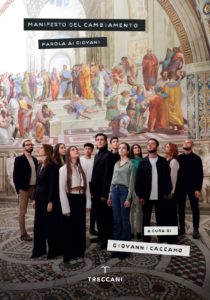

The Wall of Change
To coincide with the release of the Manifesto, the Wall of Change, a travelling art installation conceived by Caccamo himself, was lit up at the MAXXI in Rome. It is a synthesis of the whole project, glueing together different cultures, religions and identities united by a love for life and an evolutionary vision of a future of sharing and harmony. The installation consists in a wall of words projected onto a white ledwall. By connecting to the dedicated site, you can tape your own ‘word of change’, which will be instantly displayed on the screen. From the MAXXI in Rome, the Wall of Change has reached the four sites of Gallerie D’Italia, Palazzo Vecchio in Florence, the Vatican Museums, the Museo del Novecento in Milan, the Teatro Goldoni in Livorno, Palazzo Cordellina in Vicenza and the MUSMA in Matera.
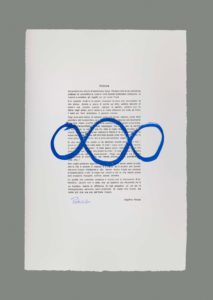
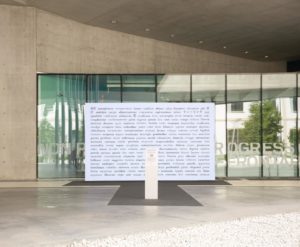
An encounter between generations
The Manifesto of Change stems from the certainty that, in order to build an evolving future, young people must maintain a dialogue with the masters. “Certain that there is no future without roots,” reads the synopsis of the book, “Giovanni Caccamo has created a new interaction between analogue and digital, young and wise”. Loredana Amenta, a young Sicilian artist who is an expert in printing and art engraving, composed twelve texts selected from the contributions in lead letterpress fonts and then printed them on cotton paper with an 1846 Albion press using the ancient technique invented by Gutenberg in the mid-15th century. Each of these sheets was then entrusted to a great contemporary artist who drew inspiration from them for a pivotal work of art in a generational dialogue. The project involved the likes of Arnaldo Pomodoro, Emilio Isgrò, Fabrizio Plessi, Ferdinando Scianna, Francesca Cataldi, Giulia Napoleone, Guido Strazza, Mario Ceroli, Maurizio Cattelan,Michelangelo Pistoletto, Mimmo Jodice, Mimmo Paladino. In addition, the volume contains an unpublished letter by Pope Francis addressed to young people.
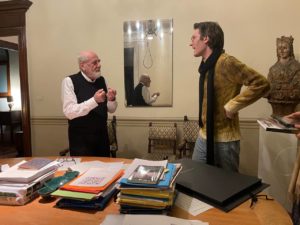
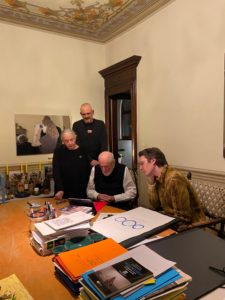
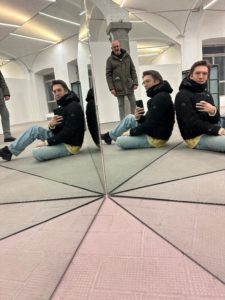
Michelangelo Pistoletto’s contribution and the meeting with Caccamo
As mentioned, Michelangelo Pistoletto was among the artists involved: specifically, he artistically accompanied the letter of one of the book’s young protagonists, singer-songwriter Angelina Mango. In the young artist’s letter on cotton paper, the founder of Cittadellarte drew in fact his Third Paradise, thus echoing the contents of the text, entitled Childhood. Also in the wake of Pistoletto’s contribution to the book, Caccamo was at Cittadellarte on Thursday 1 February. After a visit to the Pistoletto Foundation’s exhibition spaces, guided by Rebirth/Third Paradise ambassador coordinator Francesco Saverio Teruzzi, Caccamo met with Michelangelo Pistoletto. “The afternoon at Cittadellarte,” said Caccamo, “was an immersion in the light and depths of thought and beauty. Art has always been a bridge of reflection, a witness to winters and springs of the spirit, research, silences. A dialogue with Michelangelo Pistoletto is always a source of inspiration; perceiving our artistic and communicative responsibilities puts us in a position to be the engine of change, fertile land for new blossoms in opposition to the nihilism and obscurantism that too often overwhelm us. There is no future without roots, and resuming a dialogue with the masters helps us better understand who we are by taking off on the solidity of a friendly trajectory”.

